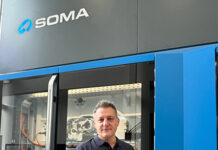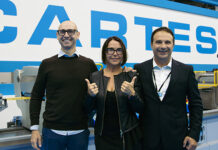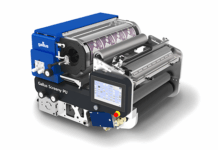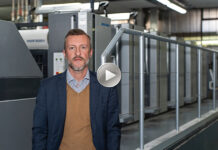Flexographic printing and platemaking are on a constant journey to improve capabilities and performance to achieve higher and higher levels of quality and consistency. The photopolymer plates used for printing and the processes making these are a deciding factor for the print quality that can be reached
Flexographic platemakers can choose from a wide variety of UV exposure units that match their individual requirements. This article explains how optimized photopolymers can enable flexographic prepress companies and printers to achieve the best result, and what all this has to do with cooking the perfect steak.
LED exposure systems promise several advantages over conventional systems:
- Standardized production and high consistency
- Less user interference and operator errors
- Use in combination with automation
- Day to day repeatability
- High quality
Why is finding the perfect fit between exposure settings and material important – and probably even more important than on conventional bank systems?

All of this can be achieved when selecting the optimal photopolymer and exposure parameter combination.
Conventional fluorescent tube systems (often referred to as “Bank exposure”) are available in many sizes and with a variety of different features: double-sided exposure banks (Figure 1) with a glass table that allows back and main exposure without the need to flip plates, temperature-controlled exposure tables with dimmable fluorescent lamps for optimum consistency (Figure 2) as well as cost-efficient clamshell designs (Figure 3).
Recent developments in UV LED technology have opened the doors for LEDs to be used in curing inks and also in the flexographic platemaking process. LED exposure systems are proving to bring many benefits to the platemaking process, which are driving more flexographic prepress operations to invest into this exposure technology.
The Challenge with LED Exposure
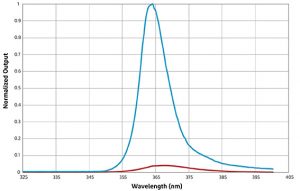
Fluorescent lamps and Light Emitting Diodes (LED) are different, but the same plate chemistry is expected to work flawlessly. UV LED exposure systems deliver energy to the photopolymer differently. LEDs emit UV radiation at a very different level of intensity (15-20 times higher) and with a narrower emission spectrum. Figure 4 illustrates the differences.
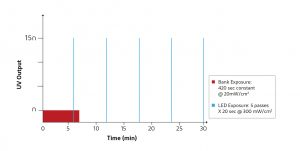
Figure 6 compares two samples of the same type of flexo plate, exposed on a LED system and a Bank system. It shows how much direct exposure one specific image element on a plate receives during each of these processes. LED systems typically scan, and thus, the image element gets exposed several times during the process, however at a significantly higher energy level than on conventional systems. Consequently, the exposure gets interrupted several times and the image element is in “the dark” between passes.
Photopolymer printing plates which are currently used may be exposed using these two parameters:
Bank Exposure: 20 mW/cm2, 420 sec (constant): 8.400 mJ/cm2
LED: Output 300 mW/cm2, 5 passes, 20 sec (per pass), cycle time 26 min: 30.000 mJ/cm2
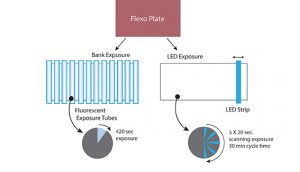
Another major difference is that Flexo platemaking UV LED exposure systems generally scan over the plate during main exposure instead of a constant exposure on fluorescent lamp systems (Figure 5).
The photopolymer undergoes two totally different processes of crosslinking. This is why so much effort is put on developing an optimal “recipe” (set of exposure parameters) to let LED-exposed plates match or exceed the characteristics of the same plate exposed with a Bank system.
In this example, the LED exposure delivers about 3.5 times the amount of energy (30.000 mJ/cm2 vs. 8400 mJ/cm2) to the plate. However, due to several passes and long gaps between the exposure cycles, it resembles the Bank exposed plate’s performance.
For non-optimized photopolymers, using this unique exposure process can require compromises in productivity and quality.
While one can achieve very short exposure times using the maximum UV output, tradeoffs in quality may occur. Often, the combination of high output and short exposure time leads to larger minimum dots, pronounced shoulders of printing elements and cupping, which all can contribute to less latitude on press and lower print quality. This challenge often requires LED exposure times to be longer in order to prevent the quality issues mentioned above.
Referring to our real-life example of how to cook a steak, LED resembles a blowtorch, while Bank exposure may be compared to slow cooking.
The challenge would be to achieve a crisp surface, but also a sufficient cooking of the center – in flexo-terms, forming fine elements and surface structures while photopolymerizing the bulk of the material sufficiently for stable shoulders and acceptable through-cure.
Cyrel® Lightning plates deliver up to 42% higher productivity*,
improved plate quality and superior print quality
The Solution
The good thing with Chemistry is, we can design the properties of our “steak”. If photopolymer formulations were optimized for LED exposure from the start, there would be less of a need to compromise between productivity and quality. Optimized flexo plates along with experienced application support staff yield the best results.
DuPont™ has rethought plate formulation, specifically for UV LED exposure. The result is a new series of photopolymers plates: Cyrel® Lightning.
The plate series uses chemistries with tailored UV profile to achieve a balance between surface and through cures. The innovation enables fast surface cure that effectively mitigates oxygen inhibition between passes of LED exposure when the plate is in the dark. At the same time, it provides sufficient through-cure through a finely tuned UV absorption profile.
This leads to an exposure time reduction of up to 42%*, improved quality especially in isolated highlight dots and superior print quality amongst LED-exposed plates.






